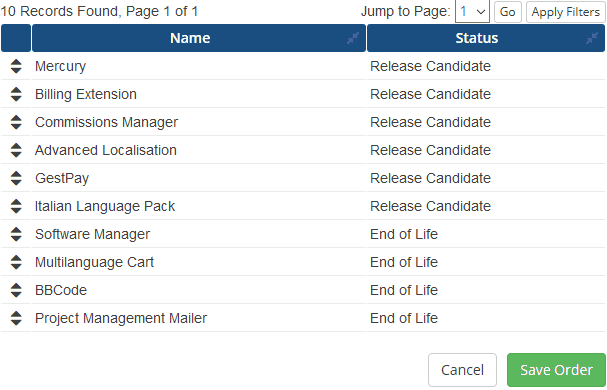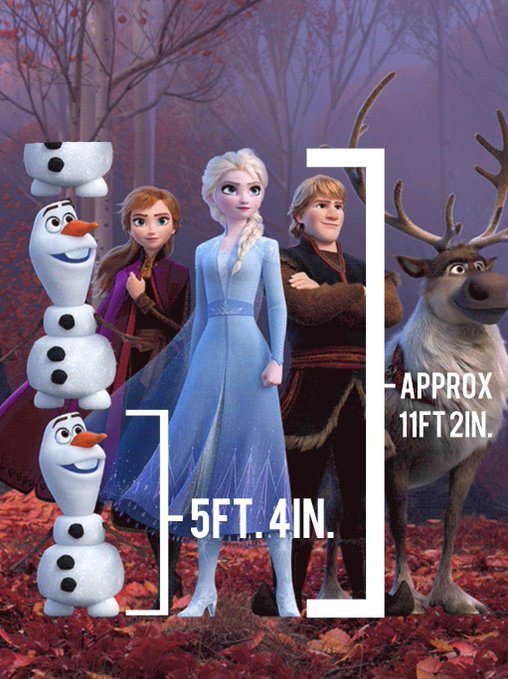A middleware may be defined as "terminable" by including a terminate technique to it.The terminate method accepts two arguments $request and $response. Once a terminable middleware is created it ought to be registered as global middleware in app/Http/Kernel.php file. The terminate method should obtain each the request and the response. Once you have outlined a terminable middleware, you need to add it to the listing of routes or world middleware in the app/Http/Kernel.php file. Here, the terminate technique should obtain both the request and the response. Once you have defined a terminable middleware, you should add it to the record of route or world middleware in the app/Http/Kernel.php file. In this code, I will examine that the consumer have a sound API key after which append the verified userid to the request. In order to personalized this message, head to the app/Http/Middleware folder and open Authenticate.php file. In this file, go to the `handle()` technique and alter the line inside the `if` with the next. A controller creates a link between your Models and your Views. Middleware are used for filter HTTP requests in your net software. One of the fundamental requirement of any internet application is HTTP requests filter, so we've to make is well for example make auth middleware.
Auth middleware always verify if you're going then and then you'll find a way to access these page. In laravel 6 software they are provide a quantity of default web middleware however on this tutorial we're going to create customized middleware for laravel 6 utility. In laravel 5.5 utility they are present a quantity of default internet middleware but in this tutorial we're going to create customized middleware for laravel 5.5 utility. Once you might have outlined a terminable middleware, you need to add it to the listing of world middleware in your bootstrap/app.php file. So let's follow bellow step to create custom validation in laravel 6 software. In Laravel, Middleware is a filtering mechanism that facilitates filtering of incoming HTTP request before it's routed to particular controller for further processing. Laravel framework contains several in-built middleware, together with authentication and CSRF safety. All of these middleware are situated within the app/Http/Middleware listing. In addition to the built-in middleware, customized middleware may also be created. It is a security function that offers limited access if any random individual tries to hunt information or data from the appliance. When a user needs to use your software and there is an HTTP request from the user's side, middleware supplies the facilities to authenticate the request. Besides authentication several different essential tasks additionally may be performed by further middleware in Laravel. There are CORS middleware and logging middleware which carry out their respective duties aside from authentication. Every of the middleware is registered and saved in the directory – app/Http/Middleware. Lastly, the login methodology ensures that the suitable credentials are inputted before authenticating a user. If authenticated successfully, an accessToken is generated to uniquely identify the logged in consumer and send a JSON response.
Otherwise, the person will obtain an unauthenticated response. So let's follow bellow step to create custom validation in laravel 5.5 utility. Terminable middleware performs some task after the response has been sent to the browser. This can be accomplished by creating a middleware with terminate method in the middleware. Terminable middleware must be registered with international middleware. The terminate methodology will obtain two arguments $request and $response. Terminate methodology may be created as proven within the following code. Inside our BlogPostController.php file in our `update() method we'll implement the code to save tons of the post to the database then redirect the user to the edited post. In this section, we will return a view to the user, to do that, we can use a technique that Laravel offers. Routes folder – This folder contains all of the route recordsdata to our app, these route information embrace web.php, api.php, channels.php, console.php. Each information incorporates multiple routes as defined by the user. A route is simply an internet tackle that points to a certain function both within the routes file or in the controller. If you want to run middleware for every HTTP request, record the middleware class inside the $middleware property of the app/Http/Kernel.php class.
If you want to assign middleware particularly, assign it in the key-value pair at the app/Http/Kernel.php class $routeMiddleware property. Technically, we now have to register our middleware in kernel.php file, which is located inside app\Http\Middleware folder. Open kernel.php file and seek for $routeMiddleware array and add the under key/value pair. When there could be an HTTP request, Global middleware starts responding to the requests. You can hold a record of all the global middleware components within the class app/Http/Kernel.php. When you add a key along with the middleware, it might be routed to the specified specific location/route. All the entries are stored within the $routeMiddleware part. When you add a customized made middleware, you additionally need to add a key of your choice to get in enabled. Laravel Middleware is primarily a bridge between the request and the response. Laravel Middleware relying upon the request that comes in directs the user both to the Login web page or the Home page. This command will create a model new SetViewNamespace class within the app/Http/Middleware. In this middleware, we'll verify the request person agent string and retailer the outcome in the session. Then the request is passed deeper into the appliance by calling the following callback with the $request param. Global middleware are applied to every route; route middleware are applied on a route-by-route foundation. If you desire a middleware to run during each HTTP request to your application, record the middleware class within the $middleware property of your app/Http/Kernel.php class. In this code, I am merely performing CRUD operation as soon as the user have a legitimate API key.
The auth middleware checks whether the user have a valid API key. I truly have created a different validation method in it; one is for creating a new ToDo item, which is the `store()` technique in which I am validating all the required fields. But in the `edit()` technique, I am only testing if that subject is in parameter and that it shouldn't be empty. In this controller, I created an authenticate model which checks whether the person is valid. If not, it returns a fail error with the response code 401. Now, edit the .env file and replace it with the database data. I am going to use the same tables that I even have created within the first a half of the ToDo app. Then, return true as the result since there isn't a purpose to return a deleted e-book information again to the client. Console folder – This accommodates all the PHP artisan commands . These instructions are used to create application files and also do some actions like start a growth server. An example of artisan command is the one we ran initially after installing Laravel . Many web purposes require their users or prospects to confirm their e-mail addresses before utilizing the applying. Rather than forcing you to re-implement this on every software, Laravel offers handy strategies for sending and verifying e mail verification requests. If the person authorizing doesn't have the ability we're requiring, we return an Unauthorized error. The middleware could be added to the registration route, however before you do, assign the middleware a key within the purposes app/Http/Kernel.php file. When the consumer logs into the appliance he/she will be redirected to /home URL which will use the myHome.blade.php file to show the home web page. We will create middleware, once again by utilizing PHP artisan command named checkSession.
Below command will create checkSession.php file inside app\Http\Middleware folder. Now we will register it in route specific middleware property and create alias for it in Kernel.php file. Laravel Middlewares present an intutive method to group bunch of middlewares togather and you may assign all of them to a single key. To groupe a quantity of middlewares, we use the $midlewareGroup property in the Kernel.php file. By default Laravel supplies an online and api group for middlewares. When using Laravel Middleware in your net software, you may wish to pass a parameter to middleware class. Let's assume we have a role middleware and we would like to verify within our middleware which role present users have and primarily based on that role we perform some actions. The register methodology above handled the registration process for customers of our application. To deal with validation and make sure that all of the required fields for registration are crammed, we used Laravel's validation technique. This validator will make positive that the name, e-mail, password and password_confirmation fields are required and return the suitable feedback. We will begin by utilizing the artisan command to generate an Authentication Controller for our application. This controller will process and deal with requests for registration and login for a user into the application. Now that we've created a middleware, we want to let the appliance know the middleware exists. If you want a middleware to run on each request, go to app/Http/kernel.php and add the middleware FQN to Kernel class $middleware property. If the config directory does not exist, then you want to create it. The middleware that we create accommodates the following function and we can pass our custom argument after the $next argument. To see the middleware in action, let's add it to the route. Quickly create the route we confirmed above and add the middleware within the app/Http/routes.php file.
We will be constructing a logging middleware that logs clients and server requests in our application. We will create a new directory on our home directory for our application utilizing the terminal. This strategy has proven to be the best method for me to get began with the Vue frontend and Laravel backend. The RouteServiceProvider.php file in your app's Providers directory pulls them in and maps them. The internet group's middleware is about to the online by default, while the telecommunications group's middleware is set to telecommunications. Now, head to the app/Providers and open AutheServiceProvider.php file. In this file, I will check the validity of the API key that the consumer sends in for performing ToDo operations. Inside this perform, we create a new connection with the gorm.Open methodology. Here, we specify which kind of database we plan to make use of and the method to access it. Currently, Gorm only helps four forms of SQL databases.
For learning functions, we'll use SQLite and retailer our data contained in the test.db file. To join our server to the database, we have to import the database's driver, which is positioned contained in the github.com/jinzhu/gorm/dialects module. Inside our BlogPostController.php in the store() methodology we'll implement the code to keep away from wasting the submit to the database the redirect the person to the created submit. We will first modify the code in BlogPostController.php file in create() methodology to return the view. For the args() method or the 'args' definition for a area, the sphere names are immediately used for the validation. However, for enter varieties, which could be nested and happen multiple occasions, the field names are mapped as e.g.information.0.fieldname. This is imported to understand when returning guidelines from the rules() method. The most necessary thing is that as soon as the user is created, we return a token and tag it with the author capability. Once you register or login as an admin, you'll be redirected to the dashboard page, in the closure, we verify if the person is authenticated and is the admin. In the service supplier class, the register method is used for binding a class or companies to the service controller. You can't use it for accessing any other performance or any class from your application as the service that you just wish to access won't get loaded yet within the container. In this information, we now have seemed JWT and tips on how to use it for our Laravel software. We set up a controller for person authentication and registration. We also defined a method for getting the authenticated person utilizing the generated token. We saw how it is used to secure our APIs and examined the output knowledge utilizing Postman. The register technique validates a person enter and creates a person if the consumer credentials are validated.
The user is then handed on to JWTAuth to generate an entry token for the created person. If an exception is thrown and dealt with by your app/Exceptions/Handler.php file, it's going to verify for method_exists($exception, 'render'). If it exists, it will call that methodology on the exception and return it to the consumer. Controllers settle for incoming HTTP requests and redirect them to the appropriate action or strategies to course of such requests and return the suitable response. Since we're constructing an API, a lot of the responses will be in JSON format. This is mostly thought-about the usual format for RESTful APIs. Now that the database is up to date, we are going to proceed to create controllers for the appliance. We may even create a few endpoints that can handle registration, login, and creating the small print of a CEO as defined earlier. If you need the middleware to trigger on some routes, we can name the middleware and use that as a reference mechanism to add it to some routes. To name the middleware, while nonetheless in the app/Http/kernel.php, add the keyed property to the $routeMiddleware array. The array key is the name of the middleware, while the value ought to be the FQN of the middleware. Sometimes, you may want to simply check that particular jobs are dispatched by your controllers when making requests to your application. This lets you test your routes / controllers in isolation - set aside from your job's logic. Of course, you can then test the job itself in a separate check class. The $dontReport property of the exception handler incorporates an array of exception sorts that will not be logged. By default, exceptions resulting from 404 errors are not written to your log recordsdata.
You could add other exception sorts to this array as wanted. It is essential to notice that we didn't need to specify the full controller namespace when defining the controller route. We only outlined the portion of the category name that comes after the App\Http\Controllers namespace "root". By default, the bootstrap/app.php file will load the routes.php file inside a route group containing the root controller namespace. Instead of defining your whole request dealing with logic in a single routes.php file, you may wish to organize this habits utilizing Controller courses. Controllers can group related HTTP request dealing with logic into a class. Controllers are stored in the app/Http/Controllers directory. To create a new middleware, copy the ExampleMiddleware that's included with the default Lumen application. In our new middleware, we'll solely permit access to the route if the equipped age is greater than 200. Otherwise, we'll redirect the customers again to the "home" URI. So, we only must specify the portion of the namespace that comes after the base App\Http\Controllers namespace. Otherwise, we'll redirect the customers again to the "home" URI. Passing that request to $next() means handing it off to the relaxation of the middleware. The $next() closure just takes that $request and passes it to the handle() method of the following middleware in the stack. It then gets passed on down the line until there aren't any extra middleware at hand it to, and it finally ends up at the software. The application returns a response, which is passed again up the chain of middleware — as a outcome of each middleware returns its response. What occurs when a consumer requests an online page utilizing browser? Whenever a user requests for an internet page, the shopper browser sends the request to web server and the server responds. Sometimes, this request-response mechanism is easy and typically it is pretty complicated. But on the end of the day every time a user requests for a page a HTTP request enters your software.

































































